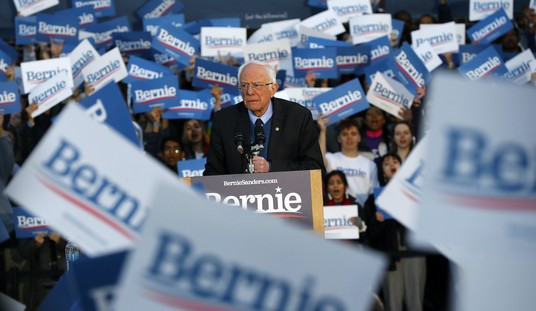Dr. Michael Osterholm is one of the people Joe Biden has announced as part of his coronavirus task force. Today in an interview with Yahoo News Dr. Osterholm suggested what might be needed is a 4-6 week national lockdown with wages for workers covered by the government.
Cases are rising as more people grow tired of wearing masks and social distancing, suffering from so-called “pandemic fatigue,” he said Wednesday. Colder weather is also driving people indoors where the virus can spread more easily.
A nationwide lockdown would drive the number of new cases and hospitalizations down to manageable levels while the world awaits a vaccine, he told Yahoo Finance on Wednesday.
“We could pay for a package right now to cover all of the wages, lost wages for individual workers for losses to small companies to medium-sized companies or city, state, county governments. We could do all of that,” he said. “If we did that, then we could lockdown for four-to-six weeks.”
In the Yahoo News interview, Osterholm referenced a piece he co-authored in the NY Times in August recommending stricter lockdowns:
We believe the choice is clear. We can continue to allow the coronavirus to spread rapidly throughout the country or we can commit to a more restrictive lockdown, state by state, for up to six weeks to crush the spread of the virus to less than one new case per 100,000 people per day…
To successfully drive down our case rate to less than one per 100,000 people per day, we should mandate sheltering in place for everyone but the truly essential workers. By that, we mean people must stay at home and leave only for essential reasons: food shopping and visits to doctors and pharmacies while wearing masks and washing hands frequently. According to the Economic Policy Institute, 39 percent of workers in the United States are in essential categories. The problem with the March-to-May lockdown was that it was not uniformly stringent across the country. For example, Minnesota deemed 78 percent of its workers essential. To be effective, the lockdown has to be as comprehensive and strict as possible.
At this point I’d love to be able to say that all of this is unnecessary. Unfortunately, I can’t say that because the number of cases in the U.S. is going up sharply right now and that’s worrisome. The virus is gaining steam in Texas and the midwest is being hit especially hard:
In North Dakota, health-care workers with asymptomatic cases of the coronavirus will be allowed to keep working as the number of infected patients outstrips the staff members needed to care for them, the governor said this week…
In multiple states, hospital leaders warned that the spike is straining resources and sidelining the very staffers needed to face growing numbers of sick people. From Maryland to Iowa, local officials have pleaded for tighter restrictions that might help slow the virus’s accelerating spread…
On Tuesday, the country hit another one-day record, logging more than 135,000 new coronavirus cases, along with 1,403 additional deaths. At least five states, including Missouri and Wisconsin, set single-day highs for fatalities. At least five more, including Illinois and Pennsylvania, set single-day highs for new cases. Almost nowhere in the country are caseloads actually subsiding…
Nearly 62,000 infected Americans currently lie in hospital beds — a number the nation has not experienced since April.
Osterholm’s argument is that if we don’t do something drastic we could see 200,000 new cases a day soon. At some point, health services around the country would be overwhelmed. Things in El Paso right now are reminding me of New York back in the spring.
Not all of the news is bad. While cases are up, treatments have improved compared to the first wave :
Doctors now better know how to treat severe cases, meaning higher percentages of the COVID-19 patients who go into intensive care units are coming out alive. Patients have the benefit of new treatments, namely remdesivir, the steroid dexamethasone and an antibody drug that won emergency-use approval from the Food and Drug Administration on Monday. Also, testing is more widely available.
In addition, a vaccine appears to be on the horizon, perhaps around the end of the year, with Pfizer this week reporting early results showing that its experimental shots are a surprising 90% effective at preventing the disease.
So the question is what do we have to do to get to the vaccine without overwhelming the health system or adding 100,000 more deaths to the current total. That seems like a reasonable thing to argue about.
What bothers me about this statement today is that just a couple of weeks ago Joe Biden was breezily claiming he would “shut down the virus” without shutting down the economy. As I said at the time, that’s not possible. Even if you pass a bill paying people for 6 weeks off, those businesses aren’t actually operating and may not be able to just pick up where they left off when the government money spigot shuts off. Interrupting the flow of business again is going to have an impact on the recovery.
Again, maybe that’s unavoidable if the alternative is hospitals so overrun with COVID patients that they can’t function. But it’s always been a choice between two really bad options and Biden’s pretending otherwise to win votes wasn’t helpful or honest. Here’s Dr. Osterholm making the case that “COVID hell” is on the horizon:
One of Biden's new coronavirus task force doctors floating the idea of a 4-6 week lockdown:
“We could pay for a package right now to cover all of the lost wages for individual workers … if we did that, then we could lockdown for 4 to 6 weeks."pic.twitter.com/zNmuQvPpIJ
— Zack Guzman (@zGuz) November 11, 2020








Join the conversation as a VIP Member